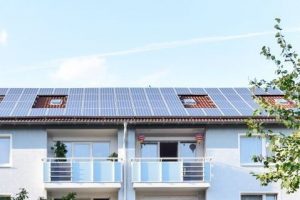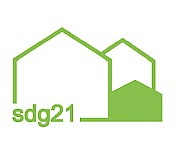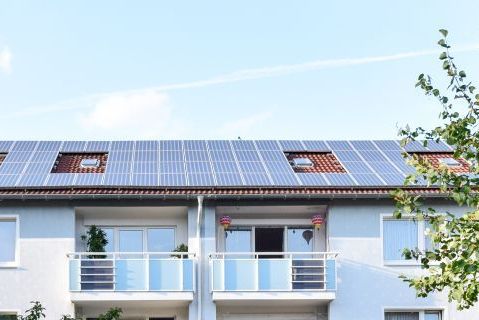 In Vienna, as a rule, no residential building may be erected without a solar system in the future. This is stipulated in an amendment to the building code, which is currently being evaluated, the red-green city government informed on Monday. Currently, such a photovoltaic obligation applies only to industrial buildings.
In Vienna, as a rule, no residential building may be erected without a solar system in the future. This is stipulated in an amendment to the building code, which is currently being evaluated, the red-green city government informed on Monday. Currently, such a photovoltaic obligation applies only to industrial buildings.
With the upcoming amendment, the requirement will now be extended to educational buildings on the one hand and to residential buildings on the other, informed Kathrin Gaal (SPÖ), city councillor for housing, and Peter Kraus, spokesperson for the Green Party on planning, in a joint statement.
Funding incentives
"The amount of the obligation for residential buildings is calculated in such a way that the electricity produced can be consumed directly in the house (e.g. in the common parts of the house)," the press release explained. Thanks to subsidy incentives, however, the city hall hopes that many building applicants will not only comply with the minimum requirements, but will also install larger systems for converting solar energy into electricity, if this makes sense.
If it is not possible to install a solar system in a new building for legal, technical or economic reasons, the developer must offer replacement areas in order to meet the obligation. However, residential buildings are exempt from this requirement.
With the amendment of the Vienna Building Code, the city also wants to take a step towards digitalisation. The amendment creates a legal basis for the electronic processing of all official steps such as the submission of the building notification, the application for a building permit, the notification of the start of construction or the notification of completion. However, the authority has the possibility to demand the submission of a copy of the building plans in the electronic approval procedure, if this is necessary for the implementation of the procedure.
Gaal saw the announced reform as a way "to optimally prepare Vienna for the opportunities and challenges of climate change and digitalisation". "Solar systems on Vienna's roofs will become the standard and accelerate the phase-out of fossil energy," added Kraus.
APA PM of 27.4.2020
Keywords:
Renewable, Climate protection, Communities, News Blog Europe (without DE), News Blog Austria, PV, City, Environmental policy, Vienna




